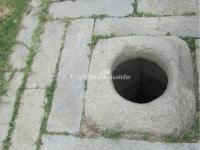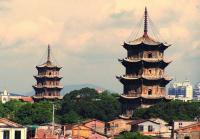Ancient Bowl Used by Manichaeists in Cao'an Manichean Temple
Manichean Temple is the only Manichean temple to survive anywhere in the world, all others being destroyed through centuries of persecution. The temple is located in the soth foot of Huabiao Mountain, Jinjiang District, Quanzhou City, and about 19 km away from the city center.
According to records, Manichaeism as introduced to China in the later seventh century. In 1313, the second year of Huangqing of the Yuan Dynasty, when it reached its height in Quanzhou, believers began to carve stone statues in Huabiao Mountain, which "has two peaks like decorated columns". In 1339, the fifth year of Zhiyuan of the Yuan Dynasty, they built the Manichaean Temple so as to spreed the doctrine of Manichaeism. The statue of Mani is carved on the rocky wall, his hair spread over his shoulder, quite different from other statues.
Manichaeism is a religion founded by the Persian Mani in the latter half of the third century. It purported to be the true synthesis of all the religious systems then known, and actually consisted of Zoroastrian Dualism, Babylonian folklore, Buddhist ethics, and some small and superficial, additions of Christian elements. As the theory of two eternal principles, good and evil, is predominant in this fusion of ideas and gives color to the whole, Manichaeism is classified as a form of religious Dualism. It spread with extraordinary rapidity in both East and West and maintained a sporadic and intermittent existence in the West (Africa, Spain, France, North Italy, the Balkans) for a thousand years, but it flourished mainly in the land of its birth, (Mesopotamia, Babylonia, Turkestan) and even further East in Northern India, Western China, and Tibet, where, c. A.D. 1000, the bulk of the population professed its tenets and where it died out at an uncertain date.


































